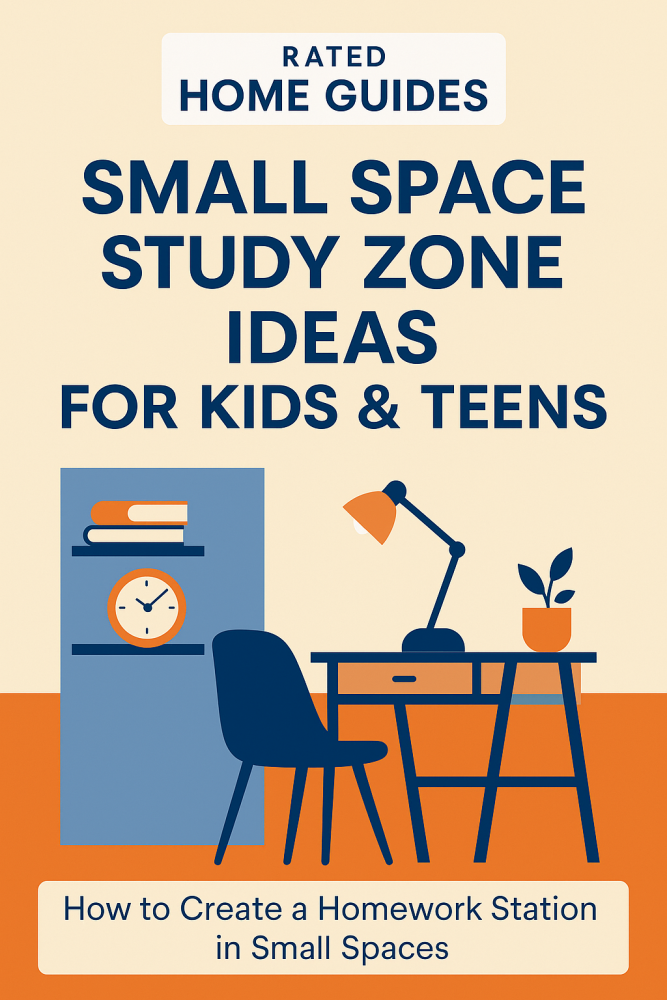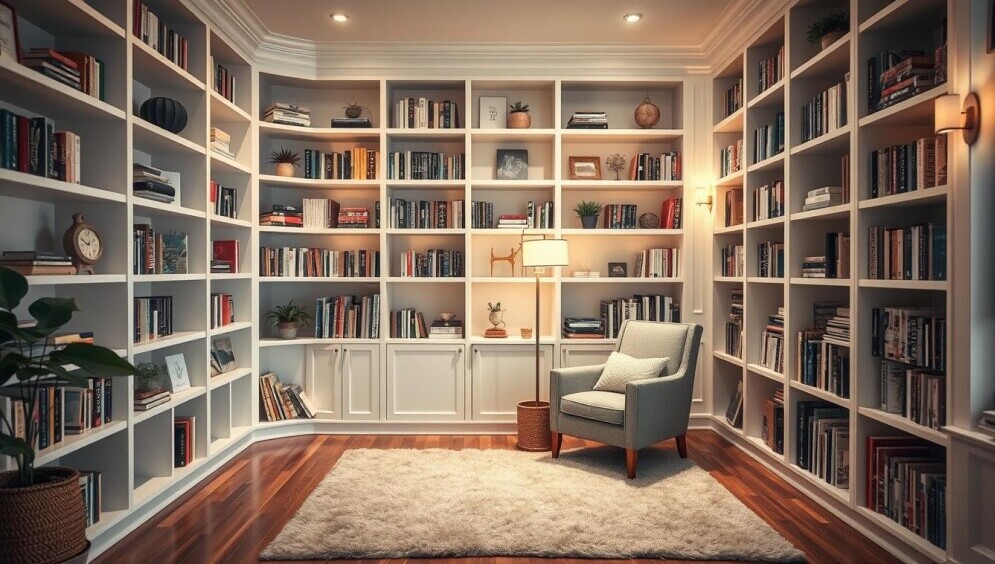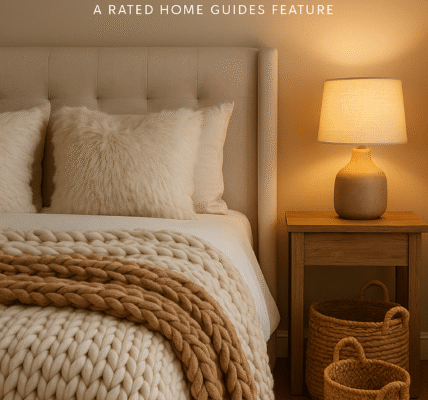How to Create a Homework Station in Small Spaces
Back-to-school season is the perfect time to rethink how your home supports learning. But what if you don’t have the luxury of a home office or spare room? The good news is that with a little ingenuity, you can create a homework station in small spaces that’s just as effective and stylish as a full-sized study. Whether your child is starting kindergarten or prepping for high school exams, a dedicated learning area helps them stay focused, organized, and motivated throughout the school year.

Kids and teens thrive when they have a consistent, comfortable place to do their schoolwork. A small space doesn’t mean sacrificing functionality—it means getting intentional with layout, storage, and ambiance. In this post, we’ll walk through the key steps to building a small space study zone that blends seamlessly into your home’s current setup. From compact desks to clutter control, you’ll find smart, realistic tips for making the most of every inch.
If your goal is to keep things organized, budget-friendly, and personalized to your child’s needs, you’re in the right place. Plus, we’ll share ideas that fit into busy living rooms, bedrooms, or shared areas without disrupting the overall flow of your space. Let’s dive into how to turn a tiny corner into a big win for back-to-school success.
🪑 1. Choose the Right Spot for Focus & Flexibility
Start by evaluating your home’s layout to find underused areas that could serve as a study zone. This might include a hallway alcove, an unused corner in the living room, or even a closet that can be transformed into a “cloffice.” Don’t overlook less obvious spots like under staircases or near windows—sometimes these make the coziest nooks. The key is to find a place where your child can sit with limited distractions and a bit of privacy.
Once you’ve chosen the spot, pay attention to lighting and accessibility. Make sure it’s near a power outlet for devices and ideally gets some natural light. If it’s in a shared space like a living room, consider adding a foldable room divider or curtain to create visual separation. This helps define the area as a “learning-only” zone and makes it easier for your child to shift into focus mode.
Choosing the right location can also help reduce mess and increase productivity. A well-placed station means your child won’t be bouncing from couch to kitchen table, and school supplies won’t get lost in daily home clutter. It’s about creating boundaries—even in a small footprint—that encourage better study habits without disrupting family life.
🧠 2. Use Compact, Multi-Purpose Furniture
The furniture you select can make or break your study space, especially in small rooms. Look for space-saving options like a wall-mounted folding desk that tucks away after use, or a ladder desk that leans vertically and includes built-in shelving. These types of desks are perfect for tight spots and help maintain an open feeling in the room. If you want something more mobile, a rolling cart desk works great for moving the setup when needed.
Consider furniture that does double-duty. For example, a window seat with hidden storage can be paired with a lap desk, or a bookshelf can double as a vertical divider between study space and sleep area in a shared bedroom. Multipurpose pieces are budget- and space-friendly, plus they grow with your child. Teenagers may want something a bit more sophisticated, like a sleek writing desk with drawers, while younger kids might do better with adjustable-height desks and colorful bins.
Don’t forget seating—this is just as important as the desk itself. A comfortable, ergonomic chair that supports posture will help reduce fatigue and make study time more effective. Choose chairs that are appropriately sized for your child’s height and include footrests if needed. Small-space-friendly furniture doesn’t mean sacrificing comfort; it simply means being more intentional with every piece you bring into the setup.
✨ 3. Layer in Lighting for Better Focus
Lighting is often overlooked but plays a huge role in creating a successful study environment. In small spaces, natural light is gold—position desks near windows, when possible, to reduce eye strain and boost mood. However, many homework stations are located in tucked-away nooks where sunlight is limited, making task lighting a must. A clip-on LED desk lamp or adjustable gooseneck light provides targeted illumination without taking up space.
You can also explore smart lighting solutions that let you control brightness and color temperature. For instance, cool white light helps enhance alertness during study sessions, while warmer tones can ease stress during evening work. Lights with USB ports are also handy for charging tablets or phones while keeping cords minimal. In shared or open-concept spaces, under-shelf lighting adds ambiance while remaining low-profile.
If you want to add an extra layer of coziness or fun, string lights or a small wall sconce can make the area feel more personal. Remember: the more inviting the homework station feels, the more likely your child will actually use it. Proper lighting not only protects their eyes but also sets the tone for productivity and calm.
🧺 4. Maximize Vertical Storage & Wall Space
When floor space is at a premium, look up. Vertical storage is a game changer for small-space organization. Wall-mounted pegboards, shelves, and corkboards allow you to take advantage of empty wall space without encroaching on valuable square footage. They’re great for organizing school supplies, displaying class schedules, or hanging weekly goals and reminders.
Floating wall shelves can hold everything from books and notebooks to storage bins and decorative items. Add labeled baskets or magazine holders to keep items sorted and easy to grab. Teens can personalize shelves with framed prints, photos, or mood boards for a motivating touch. Don’t underestimate the impact of aesthetics—it helps the area feel less like a chore zone and more like their space.
If your study zone is part of a shared living area, vertical storage also helps keep clutter off communal surfaces. Wall-mounted file holders can store homework packets, permission slips, or even charging cords neatly out of the way. By lifting clutter off the floor and tabletop, you maintain a streamlined look and make cleanup a breeze.
🧸 5. Make It Personal, Functional, and Inspiring
Adding personality to a small space study zone is just as important as adding function. This is your child’s area, so involve them in choosing colors, decor, and supplies. Whether it’s a fun mouse pad, a mini dry-erase board, or a framed motivational quote, even the smallest items can make a space feel inspiring and uniquely theirs. Think of it as decorating a locker—compact but filled with character.
Functionality should never be sacrificed for style, though. Keep essential items within arm’s reach by using drawer organizers, tabletop caddies, and labeled boxes. Store less-used supplies in higher cabinets or a nearby closet to avoid overcrowding. Encourage daily cleanup with easy-to-follow systems so the station remains inviting throughout the school year.
Consider rotating elements based on your child’s evolving interests. Younger kids may enjoy reward charts or colorful themes, while older students might appreciate a minimalist, mature vibe. The more connected they feel to the space, the more ownership they’ll take in using and maintaining it.
🎯 Final Thoughts: Every Inch Counts When You Plan with Purpose
Creating a homework station in a small space isn’t just about making room—it’s about designing an environment that supports focus, creativity, and organization. With a few space-saving strategies and the right tools, you can carve out a productive study zone in any corner of your home, no matter the size.
Remember, the goal isn’t perfection—it’s functionality that fits your family’s lifestyle. Whether your child is learning their ABCs or prepping for finals, giving them a space that says “this is where I learn” can make a real difference in how they approach their schoolwork.
💬 We’d love to hear from you! How have you created a small space study zone in your home? What products or setups worked best for your kids or teens? Drop your thoughts and tips in the comments below to inspire other parents getting ready for back-to-school season!



